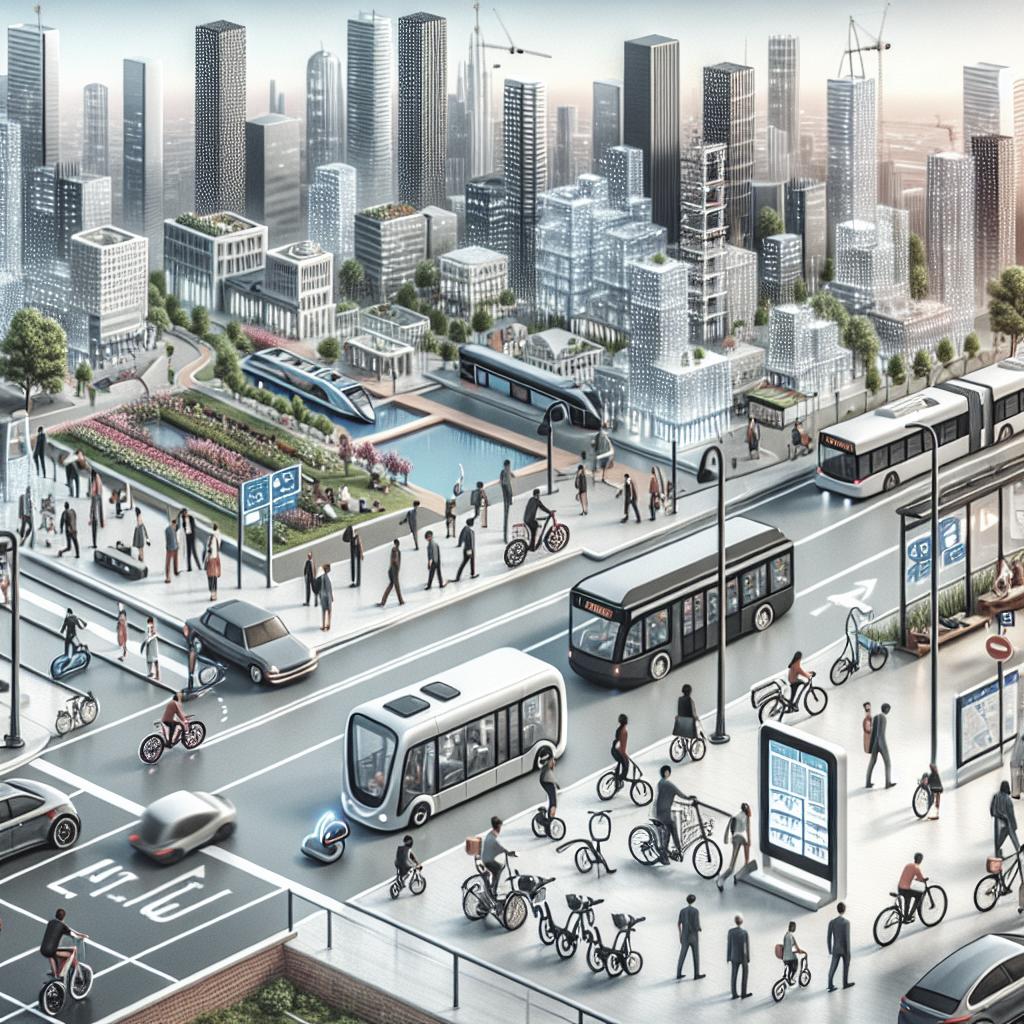<>
Urban mobility is evolving at an unprecedented pace, influenced by technological advances, environmental policies, and changing commuter behaviors. This blog post explores key trends impacting urban transport, including the soaring cost of car ownership, the effects of hybrid work on commuting habits, the increasing demand for electric vehicle (EV) infrastructure, and the pervasive issue of traffic congestion. Additionally, we will delve into the future outlook for urban mobility, considering what these trends mean for cities and residents globally. By understanding these dynamics, we can better navigate and potentially shape the future of urban transportation.
Soaring cost of car ownership and driving
Owning a car in urban areas is becoming increasingly expensive due to rising fuel prices, insurance premiums, and maintenance costs. Economic data indicates a steep climb in the cost of living, and car ownership is no exception. Urban residents face additional costs such as parking fees, which only add to the financial burden. This growing expense is prompting many to reconsider the necessity of personal vehicles, leading to a greater reliance on public transport, cycling, and walking. Moreover, governments are introducing policies aimed at reducing carbon emissions, which often include higher taxes on fossil fuels and congestion charges. These policies further disincentivize car ownership and aim to promote greener transportation alternatives. Citizens are thus looking for more affordable and sustainable ways to commute, accelerating a shift towards shared and electric mobility options.
The impact of hybrid work on the commute
The COVID-19 pandemic has drastically altered work patterns, with a significant uptick in hybrid and remote work models. This shift has had a noticeable impact on urban commuting patterns. The traditional 9-to-5 rush hour is less pronounced as people adopt more flexible working hours, reducing the strain on public transport systems and urban roadways. Cities are experiencing lower peak traffic volumes, leading to fewer delays and a more balanced distribution of travel times throughout the day. However, the hybrid work model is also presenting new challenges. Public transport operators face difficulties in predicting and managing demand, leading to under or over-utilized services. Consequently, cities need to adapt by rethinking transport schedules and possibly redesigning infrastructure to better accommodate fluctuating commuter volumes. Urban planners may also focus on creating more pedestrian and cyclist-friendly spaces as part of a broader strategy to enhance urban mobility efficiency.
Rising demand for EV infrastructure
As environmental awareness grows, there is a surging demand for electric vehicles (EVs) and the corresponding infrastructure. Governments globally are incentivizing EV adoption through subsidies and tax breaks, while also making significant investments in charging stations. Urban areas, in particular, are witnessing a proliferation of EV chargers, aiming to make electric mobility more convenient and accessible. Innovations in battery technology and charging solutions are further aiding this transition. Fast-charging stations capable of significantly reducing recharging times are becoming more common, and some cities are exploring wireless charging technologies integrated into roads. These developments not only encourage more people to switch to EVs but also align with broader sustainability goals, reducing urban pollution levels and enhancing public health. However, a well-coordinated effort is crucial to ensure that EV infrastructure keeps pace with the growing adoption rates.
Continuous congestion
Despite advances in transport technology and shifts in commuter habits, urban congestion remains a persistent challenge. Rapid urbanization has led to a greater concentration of people and vehicles in cities, outpacing the development of infrastructure. Traffic jams are a regular occurrence in many metropolitan areas, negatively impacting productivity, air quality, and the overall quality of life. Various strategies are being employed to tackle congestion, from smart traffic management systems that optimize traffic flow in real-time to policies limiting vehicle entry into city centers during peak hours. However, these measures are often just a temporary fix. Long-term solutions require a multi-faceted approach, including investment in public transportation, promotion of alternative commuting methods like cycling, and urban planning that encourages mixed-use development to reduce the distance between residential and commercial areas.
Outlook for the future of urban mobility
Looking forward, the future of urban mobility appears to be driven by technological innovation and a focus on sustainability. Autonomous vehicles could revolutionize how people move around cities, reducing the need for personal car ownership and optimizing traffic flow through smart synchronization. Similarly, the increasing use of data analytics in transport planning can help create more efficient and responsive urban mobility networks. Policy plays a crucial role in shaping these developments. Cities that prioritize investment in public transport, cycling infrastructure, and EV charging stations are likely to lead the way in creating more resilient and sustainable urban mobility ecosystems. On the flip side, cities that fail to address these emerging trends might face exacerbated challenges related to congestion, pollution, and unequal access to mobility.
Top Posts
– Innovations in Public Transport Design – The Role of AI in Modern Urban Planning – How Cycling is Transforming City Living
Topics
– Urban Mobility – Sustainable Transportation – Smart Cities Summary of main points:
| Key Trend | Description |
|---|---|
| Soaring cost of car ownership and driving | Increasing fuel prices, insurance premiums, and maintenance costs make car ownership less viable, leading to a shift toward public transport and shared mobility. |
| The impact of hybrid work on the commute | Flexibility in work schedules results in less concentrated rush hours, but presents challenges in effectively managing public transport demand. |
| Rising demand for EV infrastructure | Growth in EV adoption driven by environmental awareness and government incentives necessitates better charging infrastructures and innovative technologies. |
| Continuous congestion | Despite technological advances, traffic congestion remains a significant issue, requiring comprehensive strategies including smart traffic management and enhanced public transport. |
| Outlook for the future of urban mobility | Merging new technologies with sustainability goals could drastically change urban mobility, with autonomous vehicles and smart data analytics playing key roles. |


